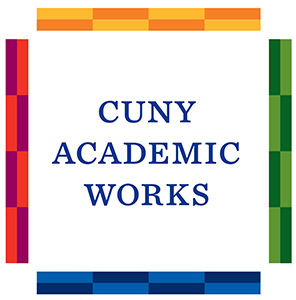
Welcome to the November edition of QC Research Highlights! This month will feature some publications by Queens College faculty that have to do with community love and support in various contexts: disaster preparedness, recovery from mental illness, children’s writings, and human connection to the natural world.
Thanks to all the authors who have contributed their works.
All the works featured in this series are available to read and download for free from CUNY Academic Works.
Social Sciences
Anna Bounds (Sociology) explores how New York City disaster preppers responded to COVID-19 in the early days of the pandemic in her article, “The Rise of Prepping in New York City: Community Resilience and COVID-19”. Bounds studied the New York City Prepper’s Network, a group that aims to prepare for disasters and to share knowledge to help their communities survive under such circumstances. As this article points out, New York City has endured numerous disasters throughout the years. While self-sufficiency is a value often associated with preppers, Bounds shows that one role of such a group is to build the social infrastructure to support survival in the case of a disaster. NYCDN teaches preparedness, organizes its members, and connects to local experts. Their work builds community resilience.
Murphy Halliburton (Anthropology), in his chapter “The House of Love and the Mental Hospital: Zones of Care and Recovery in South India,” shows how community care in South India aids recovery from schizophrenia and related disorders. While he resists romanticizing the Indian family, Halliburton emphasizes sneham, caring love, which is distinct from romantic love. Through a series of patient interviews, he noted that those patients whose families were most involved in their care fared better in their recovery. Those who were most isolated from their families talked about their loss of loving connections, while those who were recovering well attributed their success to their connection with their families. The article also examines a psychosocial rehabilitation center, Sneehavedu, which takes in the mentally ill who have no families and attempts to provide caring and affection for them. While they do refer patients to mental hospitals when necessary, the support they get at the rehabilitation center also enables recovery.
Education
Ted Kesler (Elementary and Early Childhood Education), in his article “’Does it Have to be a Real Story? A Social Semiotic Assessment of an Emerging Writer,” examines the interpersonal qualities of young children’s writings, which are overlooked by assessment instruments. Positioning himself as a parent-researcher, Kesler uses a writing event with his young son as a source of formative assessment. He recorded and coded an interaction during which his son composed and explained a story. Kesler analyzes how his son interacted with him during this process; the child made deliberate choices about his story but also sought approval along the way. This process was performative and interpersonal. Kesler recommends this strategy of formative assessment – interacting with children and observing their writing process to better understand and support their learning. This form of observation gives a richer sense of how children go about their writing and seek support for it, whereas forms of assessment that focus on the writing product risk missing this interpersonal aspect of children’s writing. He describes his approach as “naturalistic research, based in relationship and love.”
Arts and Humanities
The last article featured in this post complicates these ideas about the virtue of community. Leila Walker (Library) is the author of the “Elizabeth Kent’s New Tales of Botanical Friendship.” As Walker explains, Elizabeth Kent was a nineteenth-century writer whose work includes children’s stories and botanical works. Kent is remembered as a member of the so-called “Cockney School,” which was deeply attached to sociability. Walker argues that Kent’s botanical works exemplify the Cockney School’s philosophy by gathering together poems as plants (thus linking poetry to the natural world) in a collection where the poets of her social circle are linked to the poets of the past that they admired, imagining an ahistorical community among poets. At the same time, however, she is commenting from the margins of this community. Walker notes that Kent complains that her flowers – representing her friendships – have died. Furthermore, her use of plants is connected to the use of botanical metaphors to define women’s roles; Kent’s work resists the passivity associated with plants. Walker argues that “By collecting a Cockney canon from the margins, Kent uses the conventions of botanical and literary collecting to create a space for
herself within (and around) the networks of friendship that defined the Cockney community.”
This is one of a series of blog posts featuring faculty publications in CUNY Academic Works. Academic Works is a service of the CUNY Libraries dedicated to collecting and providing access to the research, scholarship, and creative and pedagogical work of the City University of New York. In service to CUNY’s mission as a public university, content in Academic Works is freely available to all.
If you would like to share your research in Academic Works, please see this guide to Academic Works, or contact Nancy.Foasberg@qc.cuny.edu.
